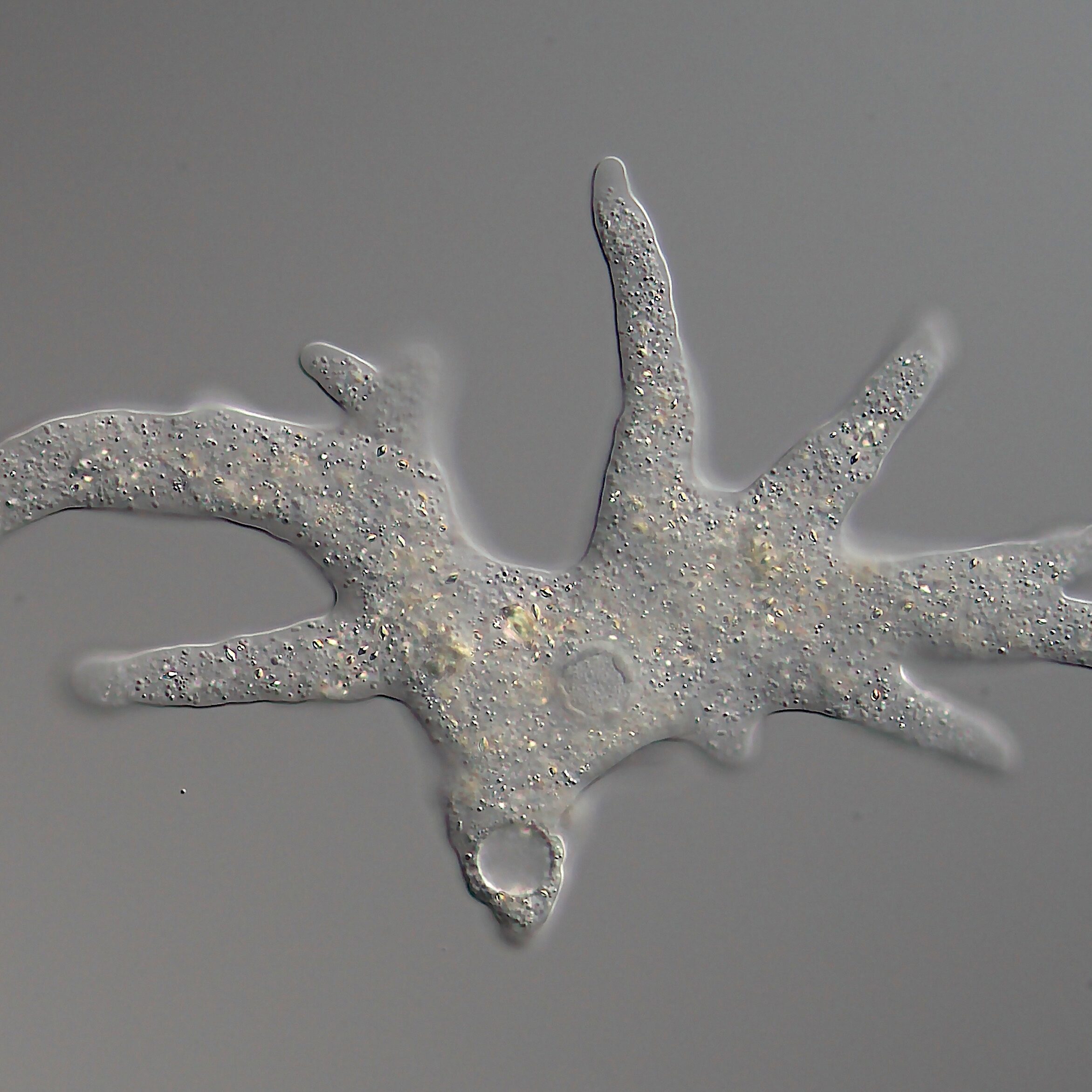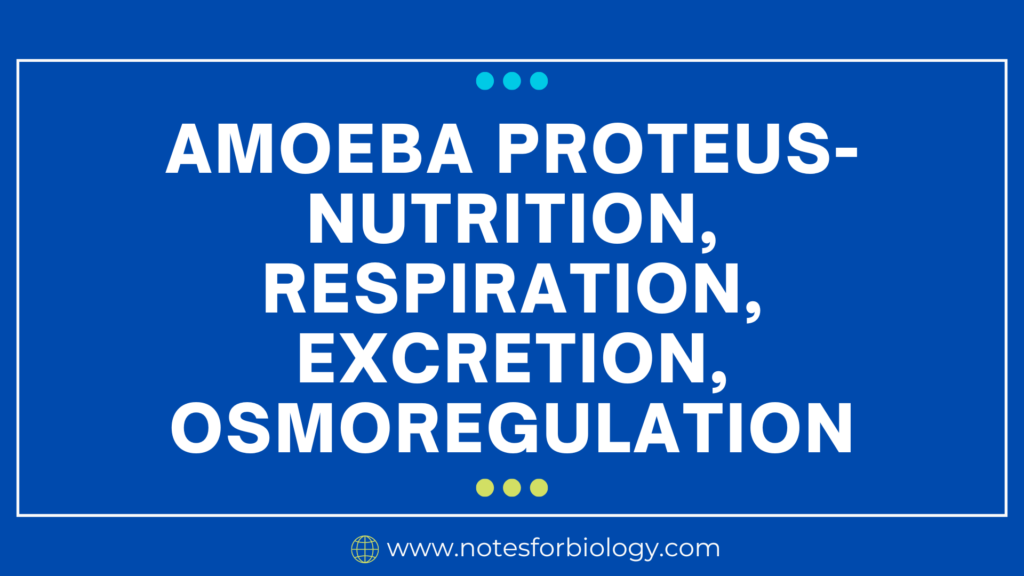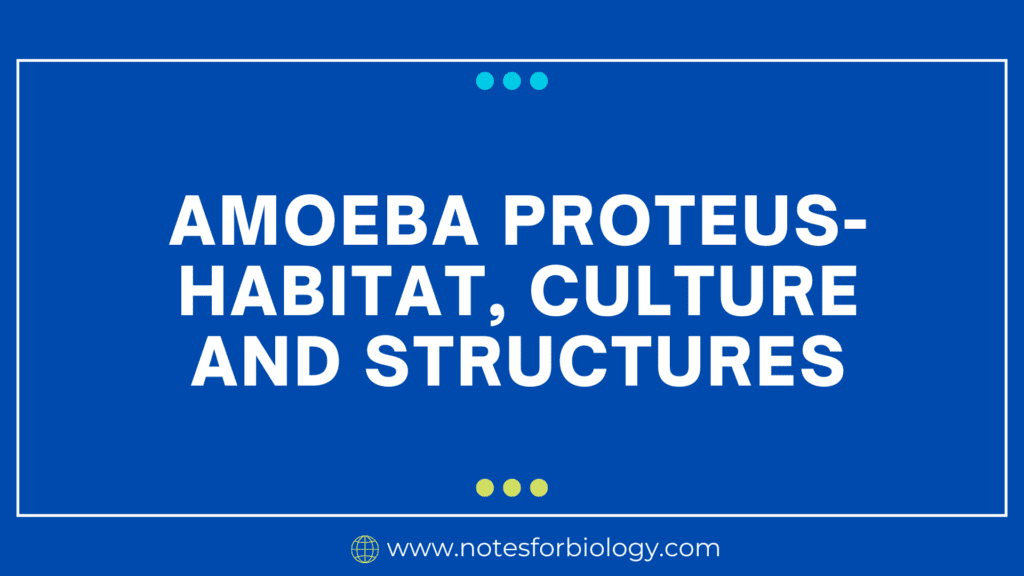Amoeba proteus is a single-celled protozoan that possesses unusual and intriguing ways to carry out vital biological functions. A member of the phylum Amoebozoa, It is a single-celled eukaryotic creature. Because of the expansion and retraction of its pseudopodia, it is widely recognized for its capacity to alter form. We shall now examine the vital biological functions of proteus, including feeding, breathing, excretion, and osmoregulation.

Table of Contents
Nutrition in Amoeba proteus
Amoeba proteus exhibits a unique and fascinating way of obtaining nutrients, primarily through the process known as phagocytosis. Here is an in-depth look at how it feeds:
Detection and Approach
Amoeba proteus uses its pseudopodia to locate and approach food particles, including bacteria, algae, and microscopic protozoans. Chemotactic signals facilitate the amoeba’s movement in response to chemical gradients, directing it toward possible food sources.
Engulfment
When an amoeba comes into contact with a food particle, it begins to engulf it by spreading its pseudopodia around it and eventually engulfing it inside a section of its cell membrane. A food vacuole, also known as a phagosome, is created during this process. It is a membrane-bound vesicle that contains the ingested particle.
Digestion
Lysosomes, which are organelles containing digestive enzymes, combine with the food vacuole during digestion.
The meal is broken down into smaller, more absorbable molecules by these enzymes. The food vacuole is the site of this enzymatic digestion, which breaks down complex organic components into simpler ones.
Absorption
Amoeba cytoplasm is where the nutrients that have been broken down—such as carbohydrates, fatty acids, and amino acids—are absorbed. Following that, these nutrients are put to use in the synthesis of energy, ingrowth, repair, and other metabolic processes.
Egestion
The remaining indigestible material that is not able to be broken down is released from the cell. The waste-filled food vacuole advances in the direction of the cell membrane.
Respiration in Amoeba proteus
- It breathes by diffusion across the plasmalemma, the general body surface that is permeable to the oxygen gasses dissolved in the surrounding water.
- Amoeba use up all of the oxygen gas that is dispersed throughout the body.
- The body breaks down complex dietary materials like proteins, lipids, and carbs into simpler molecules by enzymatic breakdown caused by the oxygen gasses ingested.
- Amoeba has no special respiratory organs.
- The oxidation reaction generates energy, which is then stored in the high-energy bonds of ATP and utilized by the organism.
- Respiration is the process of the interchange of oxygen coming inwards and carbon dioxide going outwards.
Excretion in Amoeba proteus
- Ammonia is created by the metabolism of protein in an amoeba’s body, whereas carbon dioxide is produced by the metabolism of lipids and carbohydrates.
- As ammonia is the nitrogenous waste that amoeba excretes, it is an ammonotelic animal.
- It lacks any unique excretory systems.
- These waste products diffuse out of the surrounding waterways from the overall body surface.
- The cytoplasm’s waste products enter the contractile vacuole, which makes contact with the plasma membrane before rupturing to Mischa
- The elimination of waste products involves contractile vacuoles as well. The waste products found in the cytoplasm enter the contractile vacuole, which becomes close to the plasma membrane before rupturing to discharge its contents into the surrounding surroundings.
Osmoregulation in Amoeba proteus
- It is the process of water and materials dissolving inside, independent of external circumstances.
- A proteus’s protoplasm is more concentrated than the freshwater in its surroundings, water enters the organism by endosmosis through the semi-permeable plasmalemma.
- Certain fluids are created by metabolic processes, while others are absorbed along with food particles. Therefore, the contractile vacuole gathers surplus water that is less dense than the surrounding cytoplasm and is ejected out of the protoplasm to prevent the animal from ballooning and rupturing owing to excess water.
- In the endoplasm, a new contractile vacuole begins to develop as this one vanishes.
- The contractile vacuole of Amoeba forms when it is put in freshwater.
Frequently Asked Question
How does Amoeba proteus obtain its food?
Amoeba proteus obtains its food through a process called phagocytosis. It uses pseudopodia to engulf food particles like bacteria and small algae, forming a food vacuole where the food is digested by enzymes.
What is phagocytosis?
Phagocytosis is the process by which Amoeba proteus engulfs food particles using its pseudopodia, enclosing them in a food vacuole. Digestive enzymes then break down the food within the vacuole, allowing nutrients to be absorbed into the cytoplasm.
Why is osmoregulation important for Amoeba proteus?
Osmoregulation is crucial for Amoeba proteus to maintain its internal environment, preventing it from swelling and bursting due to excess water intake from its hypotonic surroundings.
Related Articles


